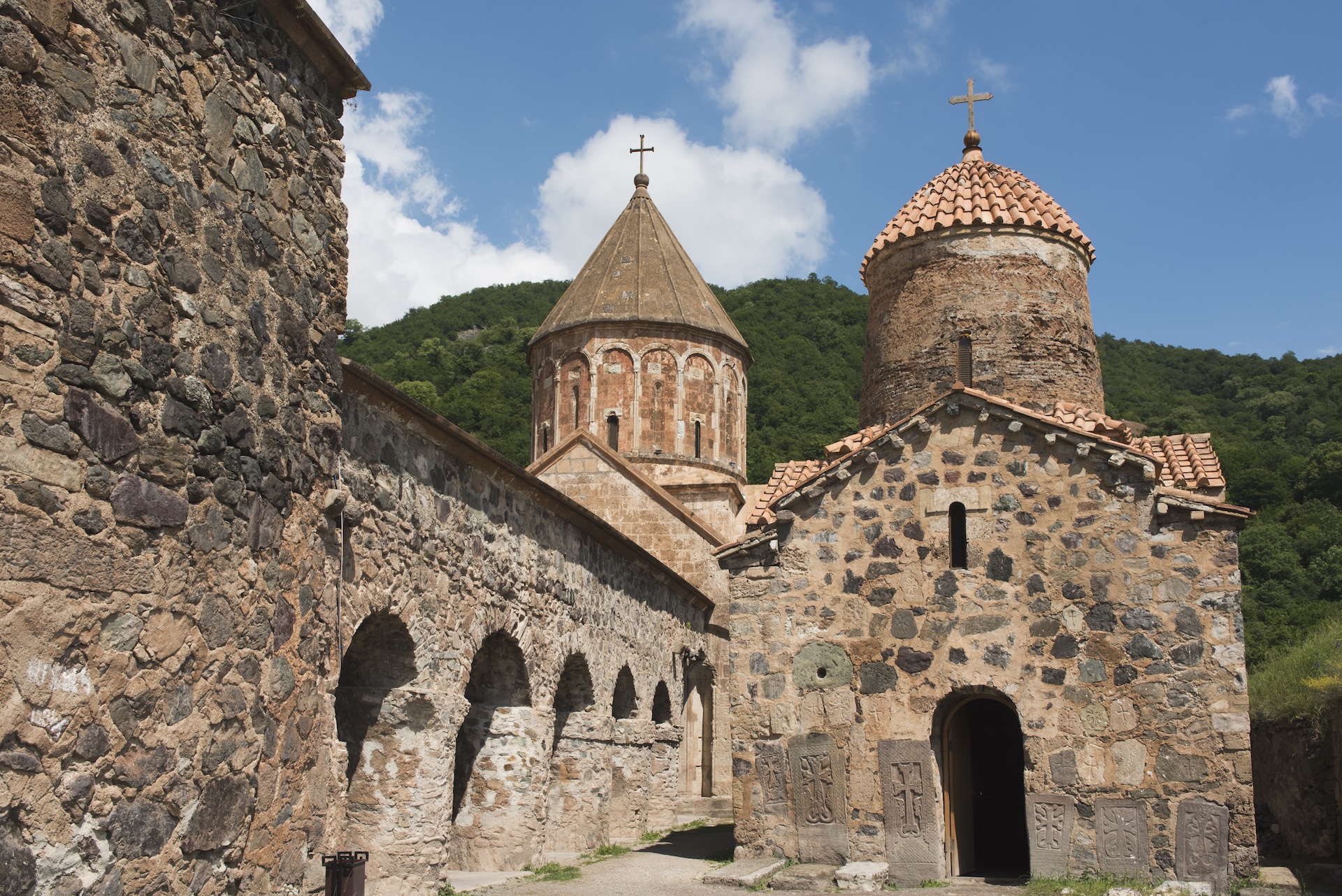
Nestled in the heart of wooded mountains, Dadivank takes its name from Saint Dadi, a legendary disciple of Thaddeus, one of the apostles who evangelized Armenia. It is said that the saint’s tomb was discovered underneath one of the monastery’s three churches.
Endowed with a rich in artistic heritage, this gem of medieval art, completed in the 13th century, was also one of the most important Armenian monasteries of its time. It consisted of about twenty buildings, some of which are partially preserved. These included structures dedicated to worship, such as the church and chapel, as well as others used for food preparation, accommodation for monks, or monastic activities. Various inscriptions in Armenian, engraved in the church walls, provide evidence of its construction in 1214 following the initiative of a local princess who had lost her husband and two sons. On the southern façade, one inscription reads: *”My eldest son, Hasan, was killed for his Christian faith in the war against the Turks, and my youngest son passed on to Christ, leaving their wretched mother in inconsolable mourning.”* On the same façade, a sculpture depicts the two sons holding a model of the church.
Despite these inscriptions in the Armenian language and other distinctly Armenian features such as the carved cross-stones (khachkars), the Azerbaijani government now claims that the monastery is part of its cultural heritage and accuses Armenia of falsifying history to take it over. The government has announced plans for a restoration to, in its words, “restore historical truth.” Like many other monuments whose Armenian origins are indisputable, Dadivank is being falsely reattributed to the Albanians, or Caucasian Albanians. This Christian population lived during the first millennium in the territory corresponding to present-day Azerbaijan, and a few thousands of their descendants, known as the Udi ethnic group, are said to remain.
In November 2020, Armenian clergy were forced to leave the site, and pilgrims bid farewell to the monastery. Its management has since been entrusted to the Udi community.